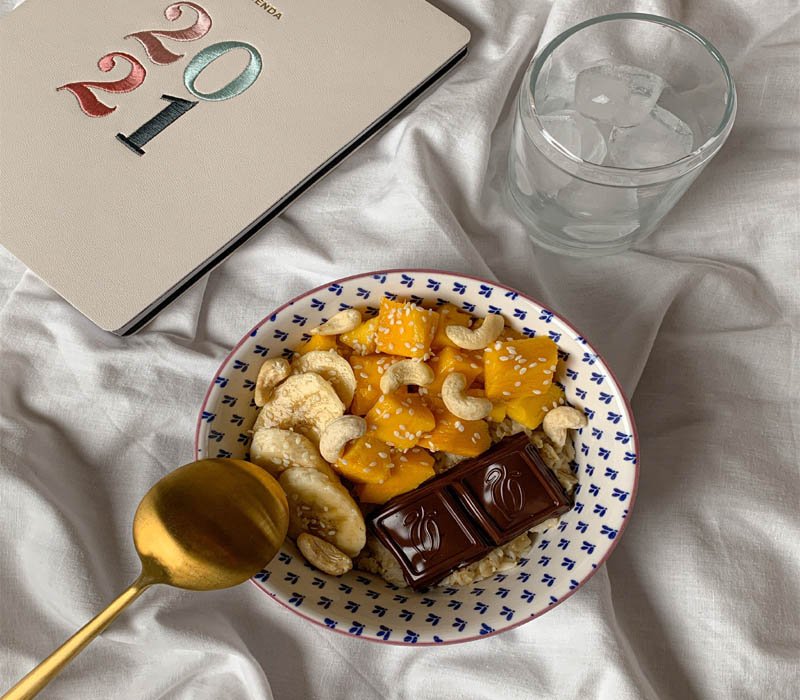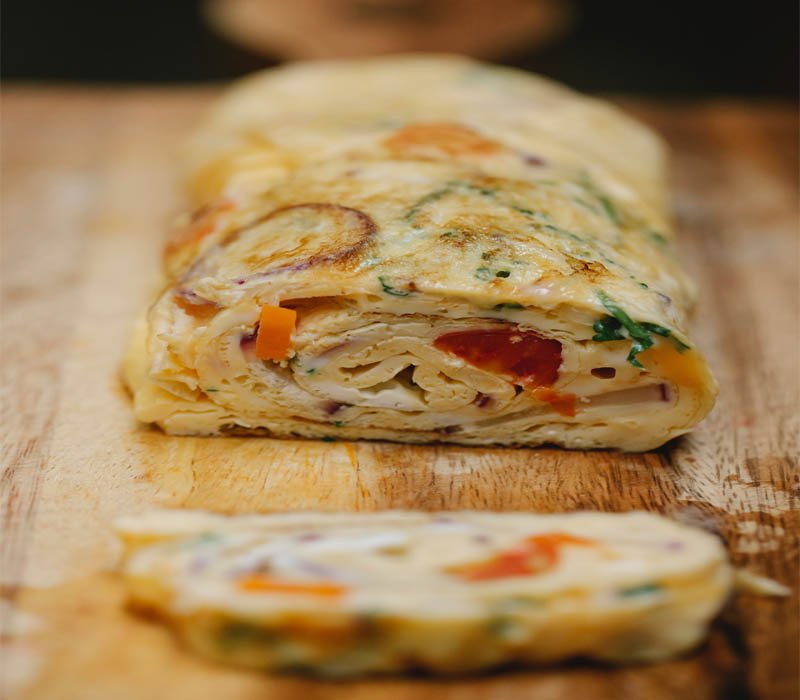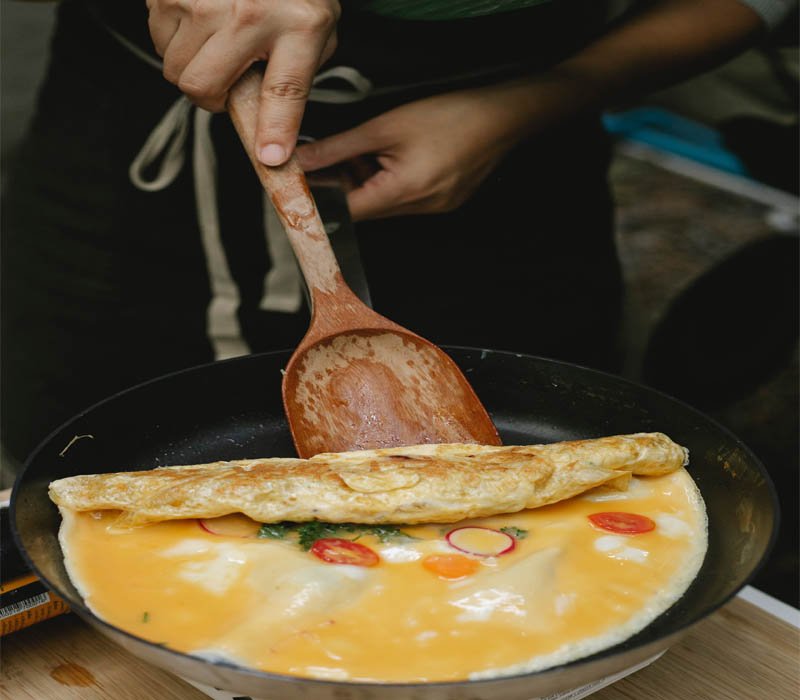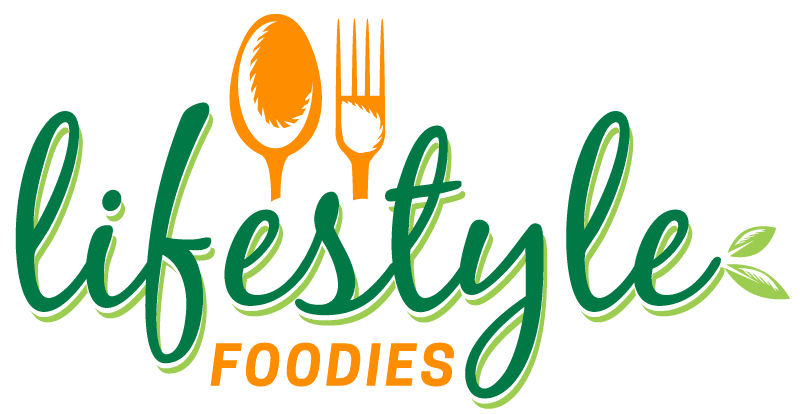Persian breakfast can be a combination of flatbread with feta cheese, jam, honey, or butter, or can be a hot bowl of Halim, Adasi or Kaleh Pache. Persians also usually drink Persian tea with their breakfast. The combination of feta cheese, jam, and also lavash bread served with Persian tea is the most simplistic traditional Iranian breakfast.
When it comes to eating breakfast, Iranians take things to the next level. with the huge variety of breakfast options and dishes, every person with any taste can find a healthy and nutritious option to have to start a good morning.
Page Contents
List of Persian Breakfast
Persian Breakfast Bread
Bread plays a substantial role in a typical Iranian breakfast. From light bites with butter or cheese to heaviest meaty breakfasts, Persian bread is always a part of breakfast dishes in Iran.
bread (nān) is usually bought every morning. The most delightful way to eat a Persian breakfast is with hot bread that is fresh from the baker’s oven.
Bakeries in Iran (Nanavati) are almost around every corner in a city and are easy to find. Each Nanavati is usually dedicated to baking a certain type of bread that has a specific method of baking depending on what type of bread they are selling.
The most popular types of bread in Iran are:
- Nān-e Sangak is a plain flatbread made with whole wheat flour and cooked over hot stones
- Nān-e barbari is a thick flatbread with an airy and doughy texture
- Nān-e Taftoon is a circular thin flatbread made with all-purpose flour
- Nān-e Lavash is a thin flatbread baked in a clay oven
Persian Breakfast Tea
A cup of freshly brewed Persian tea (chai) is almost essential on a Persian morning. Tea comes with almost all of the breakfasts listed below. Iranians usually have their breakfast tea sweet and also with no milk.
Cheese Bites For Persian Breakfast
It is important to keep in mind that in Iranian traditional breakfast, cheese (panir) is always eaten with bread. Persian cheese and bread is an easy breakfast to make and a suitable choice for when you need a quick and filling breakfast.
Iranians usually make small bites with bread and cheese also. They spread cheese over a small piece of bread and top it with different types of ingredients. The most common ingredients that come with the cheese and bread small bites are:
- Fruits (mostly watermelon, grapes,…)
- Walnuts
- Pistachio
- Sliced cucumber
- Sliced tomato
- A combination of fresh Herbs ( Sabzi khordan) such as basil, flat-leaf parsley, dill, radish, etc
Feta cheese is the most regularly used cheese in Persian breakfast.

Sweet Bites
Just like the small bites with cheese, in Iranian breakfast, there is a variety of sweet bites that are made with either butter or cream on bread topped with jam or honey.
There are a lot of different types of jam in Iran. Even though you can buy pretty much all those types from stores, most traditional Iranian families usually prefer the homemade ones, and trust me, once you experience the heavenly aroma that comes from the pot of ingredients that are turning into the jam, you can not easily go back to store-bought ones. Persian moms can make anything turn into a mouth-watering jam, from rose petals to ginger!
The most traditional jams in Iran are:
- Carrot jam
- Sour cherry jam
- Quince jam
- Strawberry jam
- Citron jam
- Rose petal jam
- Cornelian cherry jam
- Bitter orange blossom jam
- Barberry jam
Halim ( Persian Wheat And Meat Porridge )
Halim is a traditional Persian meal that includes wheat and shredded meat also. This dish usually takes several hours to make but this healthy and tasty porridge is worth the effort!
Not only halim with its thick texture is a substantial food, but it also provides a good source of energy throughout the day. This Persian breakfast is rich in nutrients such as fiber, iron, and magnesium.
Halim can be mixed with different ingredients such as milk, cream, heavy cream, sugar, cinnamon, and salt.
You can easily buy Halim from Ash and Halim stores in Iran.
Adasi (Persian Lentil Soup)
Adasi is a quick meal to make and since lentil is its main ingredient, adasi is a good source of protein and iron. The next good thing about Adasi is that it is one of the vegetarian dishes in Iran.
Don’t forget to sprinkle a bit of Ground Angelica over the soup upon serving. Ground Angelica is believed to balance the cold nature and also, believe me, it would take the flavor to another level.
Kaleh Pache For Persian Breakfast
Kaleh pacheh is a soup made of sheep’s head ( with eyes, tongue, and brain) and hooves also. It is probably considered a weird Persian food but the truth is that this food is probably one of the most popular breakfasts in Iran.
This dish is usually served early in the mornings in particular places called “Kaleh pazi” or “Tabakhi”.
Since this energetic dish is high in cholesterol, kaleh pacheh is not a meal to have daily. If you are adventurous and like to taste new things, do not miss out on this Iranian breakfast.
Eggs
This high-protein food is cooked in several different ways in Iran. The most popular ones are:
- Nimroo (Fried egg)
- Asali ( Half boiled)
- Ab-Paz ( Hard boiled)
Persian Omelette
Omelette is a popular option for breakfast. The variety of Persian omelets is shockingly high.
The most common Persian omelet is the Persian tomato omelet, which is usually made with either fresh tomato or tomato paste.
In addition to all the delicious dishes mentioned above, each region of Iran has some unique dishes that people usually have for breakfast which, unfortunately, is impossible to mention in just one post. But here are some of the most famous breakfasts in different regions of Iran:
- Panir Boreshteh ( fried cheese, egg, and dill)– Guilan
- Khagineh ( Iranian sweet omelet) – Tabriz
- Shapouri ( fried eggs with beans) – Guilan
- Ashe-e sabzi (Persian herb thick soup) – Shiraz and also the southern part of Iran
- Shireh-Ardeh (date syrup with sesame tahini) – Southern part of Iran
- Ferenc (Persian rice flour dessert) – Different parts of Iran
- Shir-berenj (Persian rice pudding) – Different parts of Iran

Omelette Recipe For Persian Breakfast
Ingredients
- 2 tbsp. vegetable oil
- 1 clove garlic, crushed
- ½ onion, finely chopped
- 6 plum tomatoes, deseeded and chopped
- 2 tsp tomato purée
- 6 eggs
- 25g salted butter, softened
- ½ a small pack of chives, finely chopped
- Flatbreads, to serve
Method
- STEP 1: Heat the oil in a lidded non-stick frying pan over medium heat, add the garlic and cook for a minute until just starting to turn golden. Tip in the onion and cook for 5 minutes until softened, then add the tomatoes and purée
- STEP 2: Cook for 5 minutes until all of the moisture has evaporated from the tomatoes. Turn the heat to low and break the eggs into a bowl, then add to the pan. Gently whisk and break the yolks, then put on the lid for a minute. Remove, then stir and mix, then put the lid back on. Continue to do this until the eggs are almost set
- STEP 3: Spoon into a serving dish then add the salted butter and a sprinkling of chives. Serve with flatbreads

We have more ideas Healthy Breakfast Ideas | Everything You Need to Know.
More Frequently Asked Questions
Persian breakfast can be a combination of flatbread with feta cheese, jam, honey, or butter, or can be a hot bowl of Halim, Adasi, or Kaleh Pache. Persians also usually drink Persian tea with their breakfast.
Major staples of Iranian food that are usually eaten with every meal include rice, various herbs, cheese, a variety of flatbreads, and some type of meat (usually poultry, beef, lamb, or fish). Stew over rice is by far the most popular dish, and the constitution of these varies by region.
The Iranians generally eat three meals a day: a light breakfast in the morning, lunch at noon which is the main meal, and dinner at the night. It includes a wide range of dishes comprising different types of “Khoresht” (stew) like “Ghormeh Sabzi”, Fesenjun, Gheymeh, Bademjan, etc.
Rice is the second most popular and favorite food in Iran after bread. The most famous and also common rice-based food products in Iran are the low kebab, chew gheimeh, ghormeh sabzi, and joojeh kebab. Each of these foods can be served as the main rice dish with side dishes.
Conclusion
Persian breakfast can be a combination of flatbread with feta cheese, jam, honey or butter also, or can be a hot bowl of Halim, Adasi, or Kaleh Pache. Persians also usually drink Persian tea with their breakfast. The combination of feta cheese, jam, and also lavash bread served with Persian tea is the most simplistic traditional Iranian breakfast.
When it comes to eating breakfast, Iranians take things to the next level. with the huge variety of breakfast options and dishes, every person with any taste can find a healthy and nutritious option to have to start a good morning.
If you enjoyed this post you would also love to see more
- Top 12 High Protein Salad Recipes
- Healthy Breakfast Ideas | Everything You Need to Know
- Cream Tea | All You Need To Know About
- Healthy Snacks That Will Help You in Weight Loss


